How to Bake Almost Everything Perfectly, Part 1
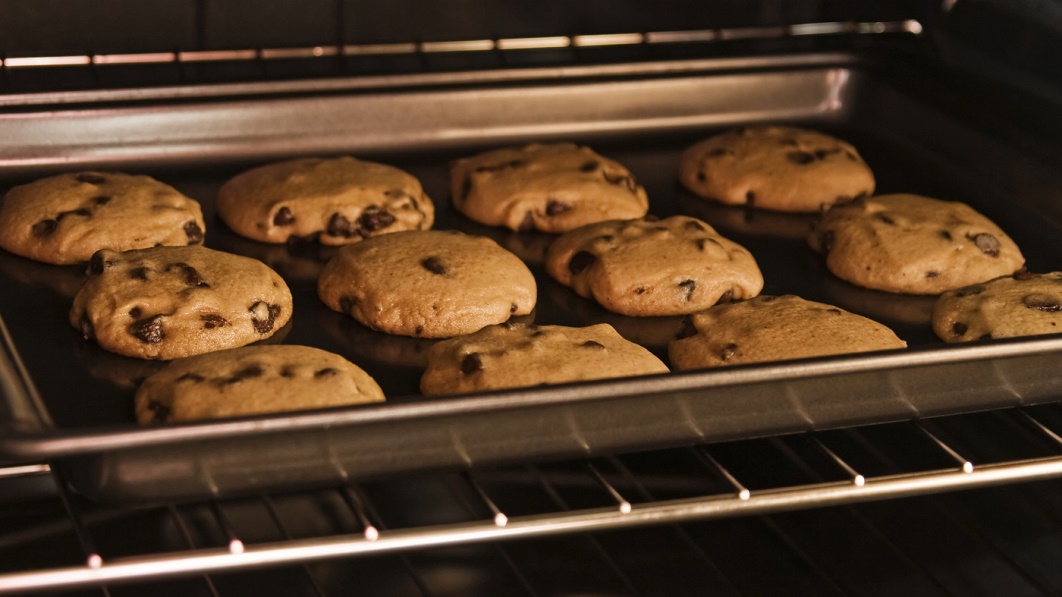
Are my breads, cookies, or cakes ready to come out of the oven? This is a common and critical question. We all know that over-baked cookies are dry and hard; under-baked bread is soggy. And both are hugely disappointing.
But Dennis, premier baker and owner of the Prepared Pantry (www.preparedpantry.com), tells us exactly how to know when baked goods are ready to leave the oven. For timely help during this season of baking, read on.
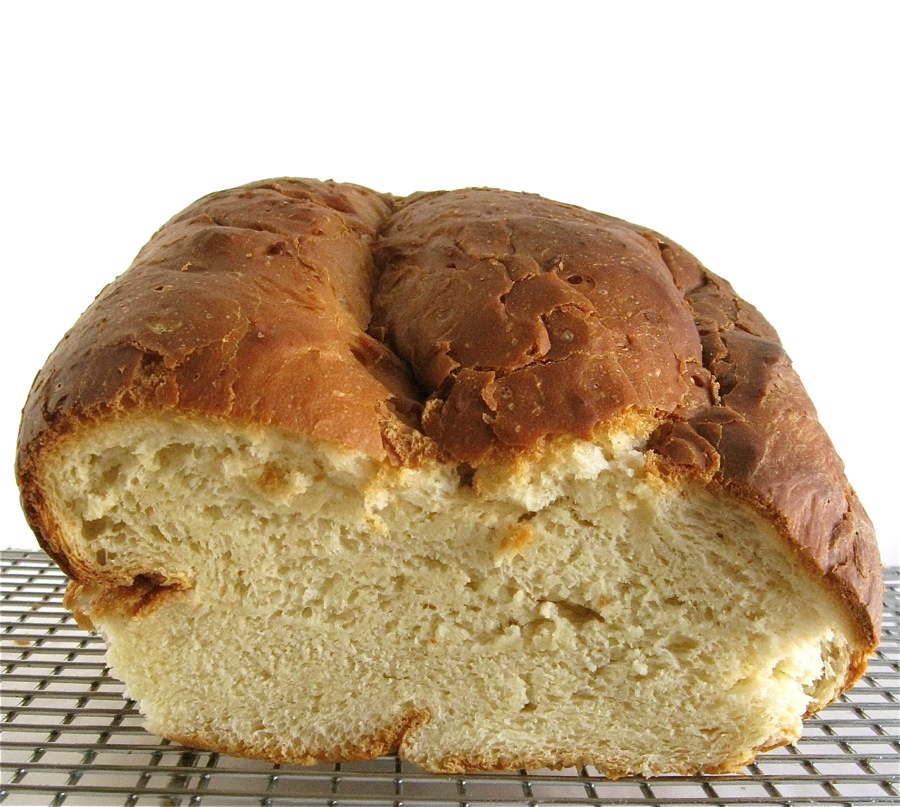
Yeast Breads and internal temperature. The tendency is to under-bake yeast breads. The internal temperature of most yeast breads should be 210 degrees and must be at least 185 degrees. Soft sandwich breads often baked to 190 to 200 degrees.
Internal temperature is key. And the only way to reliably tell what is going on inside a loaf is with a probe-type thermometer. Remove the bread from the pan and insert the thermometer through the bottom crust into the center of the loaf.
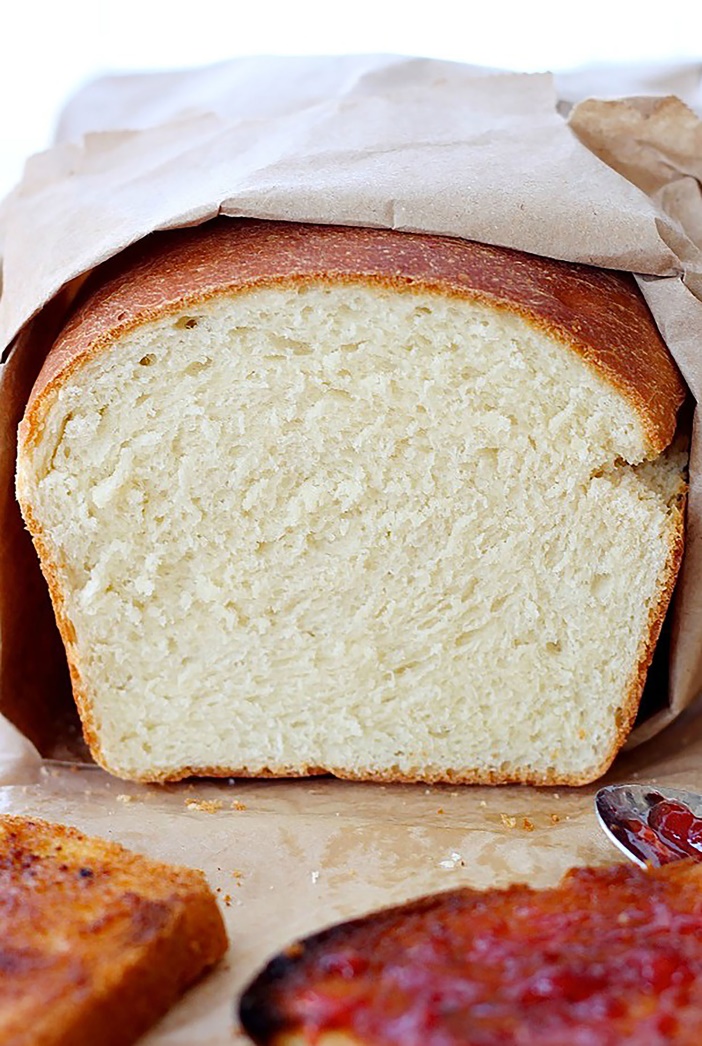
Yeast Breads and Color. When the bread is done, the crust color will range from a golden brown to a deep brown for artisan breads baked in a hot oven. Breads with a higher sugar content or those baked in a hot oven, will tend to brown more rapidly as the sugar caramelizes. If the bread is browning too rapidly, make a tent of aluminum foil and cover the top of the loaf.
In light colored pans, the bottom crust is the last to brown. With a done loaf, the bottom will color even in a light-colored pan.
Yeast Breads and Sound. My mother and Aunt Annie were bread bakers. They tested doneness by tapping the loaf with their finger. A done loaf will sound hollow when tapped. I don’t remember them ever making a mistake. Dennis says he taps his loaves as well, but he nearly always follows with a thermometer probe and sometimes the thermometer proves him wrong.
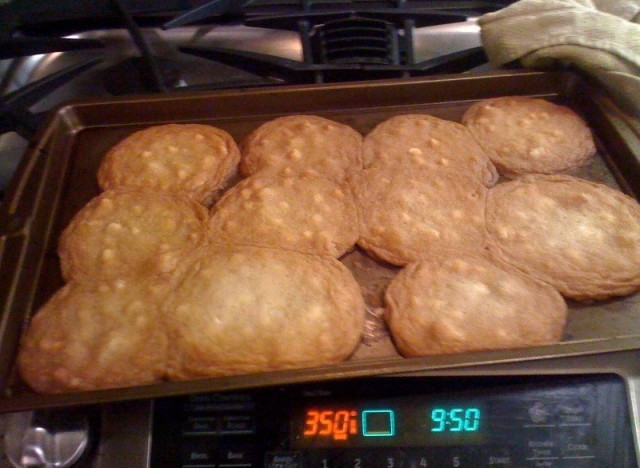
Now to cookies and under-baking. If the tendency is to under-bake breads, the tendency is to over-bake cookies. With cookies, if you remove them from the oven just before you think they’re done, you’ll almost always be right on. And we all know the difference between a just right cookie and an over-baked one is dramatic. So under-bake is the motto.
Cookies and achieving Uniform Size and Quantity. Professional-looking cookies are always uniform in size. Not only are they more attractive, but the finished results are consistent when cookie size is consistent. A cookie dough scoop makes this challenge easy. And remember, cookies of different sizes take different times to bake.
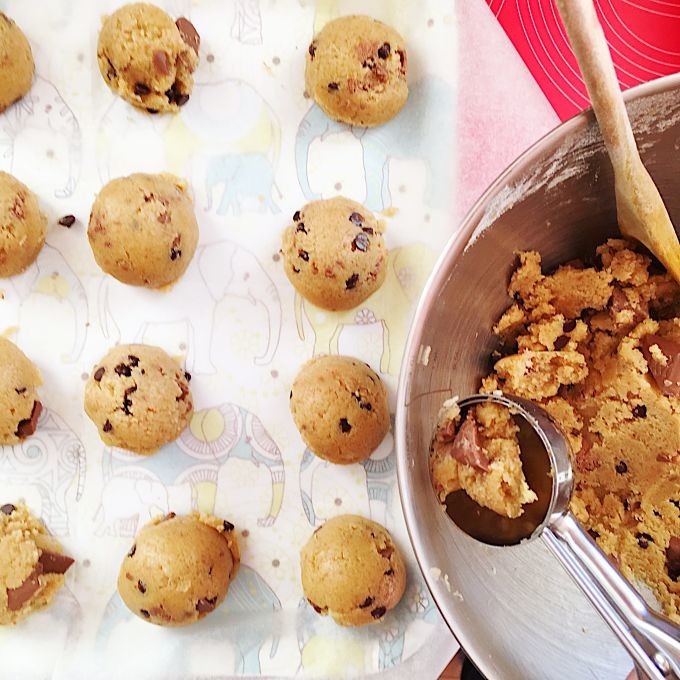
And get in the habit of placing the same number of cookies on your sheet each time. The more cookies on your baking sheet, the more time they take to bake.
If it seems that the last sheet of a batch generally has fewer cookies than your other batches, then bake your smaller batches by reducing your baking time by at least a minute.
Also, don’t let your dough get warm while waiting for the earlier batches to bake. The fat (for me that’s always butter) should be a solid, not melted. So put your dough in the refrigerator between batches.
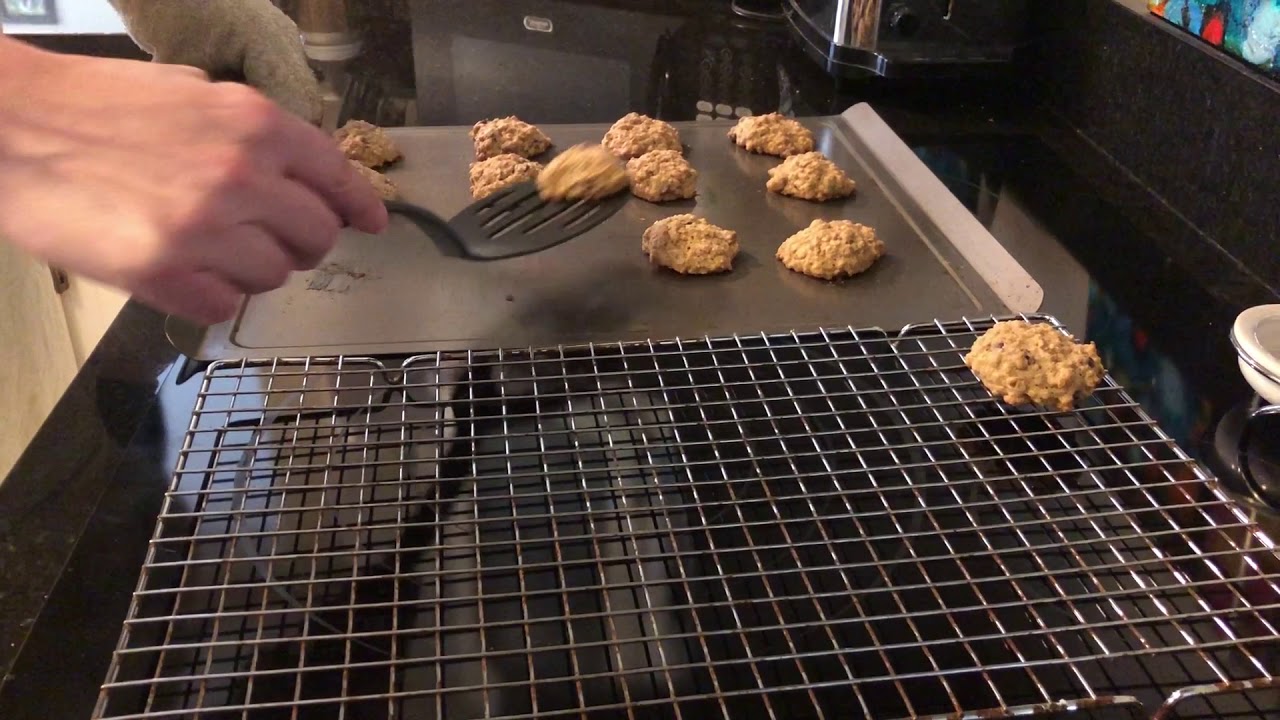
Cookies and Removing Them from the Sheet. For Dennis, this means immediately. Cookies continue to bake on a hot baking sheet. Sometimes waiting a minute is necessary for an easy release, but for most recipes, quick removal is the best.
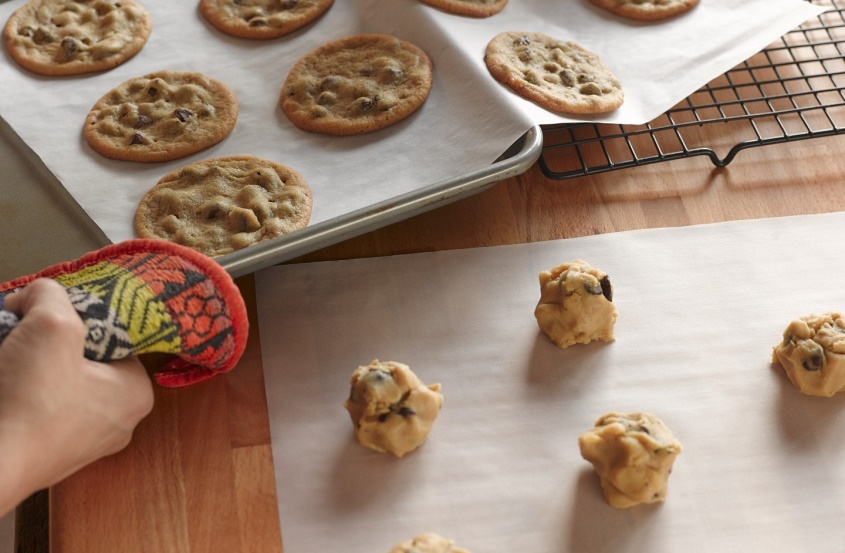
Dennis recommends baking on parchment paper and sliding the parchment paper off the pan as soon as the cookies come from the oven. If the cookies look a little soggy in the middle, just leave them on the sheet for a minute and they’ll firm up. But the SOP is what was mentioned earlier—don’t over-bake your cookies, thus the “quick removal” advice.
Cookies and Color. Most cookies should be gold in color, not brown. Put the first cookie on a cooling rack, lift the rack and peak at the underside of the cookie. If it’s brown, it’s cooked too long. That said, though, both the amount of sugar and soda in the recipe will affect how fast a cookie browns. So watch your batches closely.
Cookies, Chocolate and Bars. Chocolate cookies represent another challenge: you can’t tell if they’re browning. If you are baking with a new recipe, bake a few cookies and check them for doneness before baking the entire batch. Chocolate cookies lose their “wet” look when done.
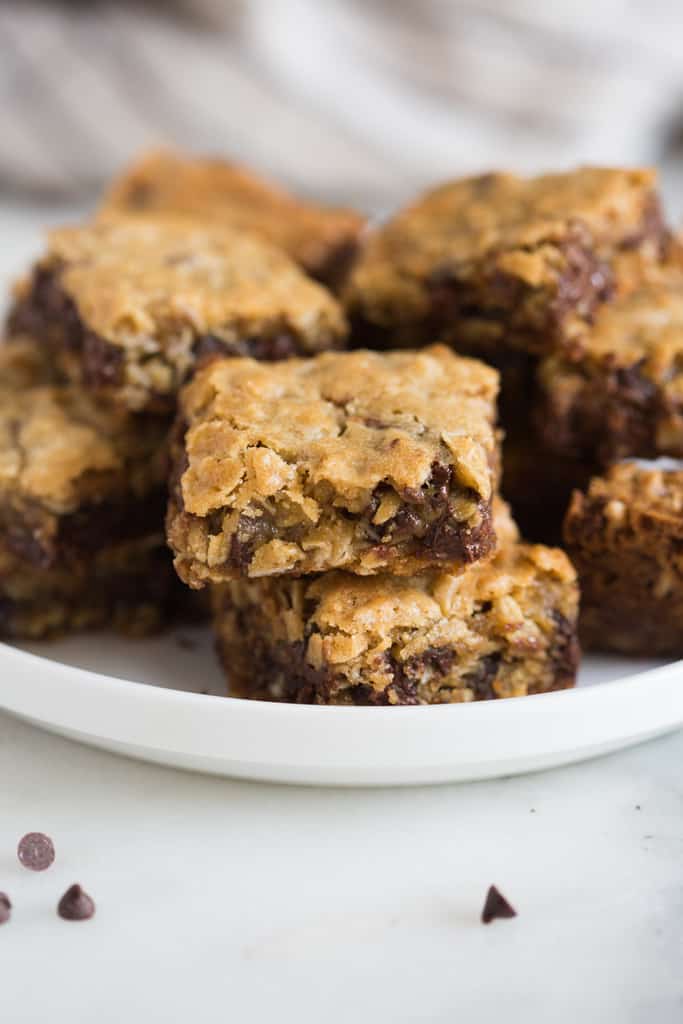
But many bar cookies will have a dry, shiny crust when done (so the inserted toothpick will likely be your guide). It’s easy to over-bake bars as well as cookies. To avoid this, opt for a few crumbs sticking to your toothpick.
Next week I’ll talk about cakes, quick breads, and custard pies. Meanwhile, give Dennis’ tips a try and enjoy this holiday baking season!
- www.npr.org
- www.blog.kingarthurflour.com
- www.redstaryeast.com
- www.chefsville.org
- www.anjalinachugani.com
- www.youtube.com
- www.reynoldskitchens.com
- www.tastesbetterfromscratch.com
 Alice Osborne
Alice Osborne
Weekly Newsletter Contributor since 2006
Email the author! alice@dvo.com
